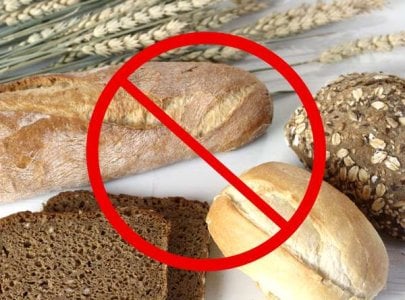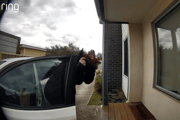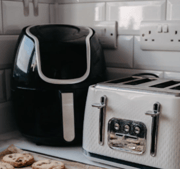Crunching the numbers: Aussies suffering from this disease are feeling the bite of hidden food costs harder!
- Replies 4
As we navigate the aisles of our local supermarkets, the rising cost of living is a concern that unites many Australians.
However, lifestyle journalist Claudia Poposki shared a hidden expense that's quietly adding a significant burden to the grocery bills of hundreds of thousands across the nation, and it's time we shed some light on it.
In June 2021, Claudia was diagnosed with coeliac disease, an autoimmune condition triggered by gluten—a protein found in wheat, rye, and barley.
According to Coeliac Australia, when individuals with coeliac disease ingest anything containing gluten, their immune system reacts negatively, leading to various symptoms such as abdominal pain, bloating, diarrhoea, fatigue, and weight loss.
Over time, repeated exposure to gluten can cause serious health complications, including malnutrition, osteoporosis, infertility, and an increased risk of certain cancers.

Claudia stressed that for people suffering from the disease like her, the cost of food shopping is not just a matter of budgeting; it's a health imperative.
With around one in 70 Australians affected by coeliac disease, and a staggering four out of five unaware of their condition, the impact is far-reaching.
According to her, the diagnosis of coeliac disease can be life-altering, as it requires a strict gluten-free diet to manage symptoms and prevent long-term health complications.
‘There is the obvious—think pasta and bread, but gluten is also in so many sauces and flavourings, she said.
‘I had to learn a new way to cook, and how to stand up for myself at restaurants when asking if something was safe to eat.’
The search for gluten-free alternatives begins, but this search comes at a steep price.
Let's take a closer look at the financial toll of maintaining a gluten-free diet.
Imagine the frustration of paying $3.70 for a 350g packet of gluten-free penne, while the same amount could fetch you a 500g bag of regular pasta for just $1. Or consider the disparity in bread prices, where a 550g gluten-free loaf can cost $7, compared to a $2.40 loaf of standard white bread.
The price hike doesn't stop at the basics.
Gluten-free versions of snacks, frozen meals, and even breakfast cereals can be significantly more expensive, with smaller portion sizes to boot.
According to Claudia, it's not just a matter of a few dollars here and there; these costs add up quickly, especially for those who must follow this diet for medical reasons.
Social media has become a space for those with coeliac disease to share their experiences and frustrations.
Users like @han_fitzy and @glu.tenfreegoodness highlight the financial strain of gluten-free living, from grocery shopping to dining out, where a simple pizza base upgrade can cost an additional $8.
Another coeliac aired their frustration about this same problem, saying: ‘Over the last two decades, it's gotten easier to eat [gluten-free food] but more expensive to do so. I get hammered with surcharges that I don't get to choose.’
Claudia also shared, ‘Research conducted by health brand GluteGuard, which helps protect against symptoms of accidental gluten consumption, with YouGov, in December last year, showed that a third of coeliac-sufferers can’t afford to buy gluten-free products because they are too expensive and 29 per cent have had to forego other essentials in order to afford gluten-free food.’
‘How is this even acceptable? Coeliac disease isn’t an allergy like dairy where you can avoid one food group because it is in everything or a lifestyle choice like veganism or paleo.’
‘I get why it may be slightly more expensive, I do…. You need a completely separate production line that has no chance of cross-contamination, and that costs money. But I am consistently paying more for less—sometimes three times more,’ she added.
This was also highlighted when a popular snack brand released a gluten-free version of their product.
Claudia argued that in some countries, such as Scotland, Wales, and Italy, support systems like prescriptions and subsidies are in place to help alleviate these costs, as she called for Australia to consider similar measures to support those with coeliac disease.
As we approach Coeliac Awareness Week starting March 13, it's crucial to recognise the challenges faced by those with this condition.
Dr Kim Faulkner-Hogg, an advanced accredited practising dietitian, also emphasised the importance of education and planning to find cost-effective gluten-free options.
However, the broader issue remains: access to affordable gluten-free food is a matter of health equity.
 Do you know anyone suffering from coeliac disease? How do they navigate the challenges associated with the disease? Let us know in the comments below.
Do you know anyone suffering from coeliac disease? How do they navigate the challenges associated with the disease? Let us know in the comments below.
However, lifestyle journalist Claudia Poposki shared a hidden expense that's quietly adding a significant burden to the grocery bills of hundreds of thousands across the nation, and it's time we shed some light on it.
In June 2021, Claudia was diagnosed with coeliac disease, an autoimmune condition triggered by gluten—a protein found in wheat, rye, and barley.
According to Coeliac Australia, when individuals with coeliac disease ingest anything containing gluten, their immune system reacts negatively, leading to various symptoms such as abdominal pain, bloating, diarrhoea, fatigue, and weight loss.
Over time, repeated exposure to gluten can cause serious health complications, including malnutrition, osteoporosis, infertility, and an increased risk of certain cancers.

Claudia Poposki shared the struggles of people like her suffering from coeliac disease—an autoimmune condition triggered by gluten—when buying food. Credits: Shutterstock
Claudia stressed that for people suffering from the disease like her, the cost of food shopping is not just a matter of budgeting; it's a health imperative.
With around one in 70 Australians affected by coeliac disease, and a staggering four out of five unaware of their condition, the impact is far-reaching.
According to her, the diagnosis of coeliac disease can be life-altering, as it requires a strict gluten-free diet to manage symptoms and prevent long-term health complications.
‘There is the obvious—think pasta and bread, but gluten is also in so many sauces and flavourings, she said.
‘I had to learn a new way to cook, and how to stand up for myself at restaurants when asking if something was safe to eat.’
The search for gluten-free alternatives begins, but this search comes at a steep price.
Let's take a closer look at the financial toll of maintaining a gluten-free diet.
Imagine the frustration of paying $3.70 for a 350g packet of gluten-free penne, while the same amount could fetch you a 500g bag of regular pasta for just $1. Or consider the disparity in bread prices, where a 550g gluten-free loaf can cost $7, compared to a $2.40 loaf of standard white bread.
The price hike doesn't stop at the basics.
Gluten-free versions of snacks, frozen meals, and even breakfast cereals can be significantly more expensive, with smaller portion sizes to boot.
According to Claudia, it's not just a matter of a few dollars here and there; these costs add up quickly, especially for those who must follow this diet for medical reasons.
Social media has become a space for those with coeliac disease to share their experiences and frustrations.
Users like @han_fitzy and @glu.tenfreegoodness highlight the financial strain of gluten-free living, from grocery shopping to dining out, where a simple pizza base upgrade can cost an additional $8.
Another coeliac aired their frustration about this same problem, saying: ‘Over the last two decades, it's gotten easier to eat [gluten-free food] but more expensive to do so. I get hammered with surcharges that I don't get to choose.’
Claudia also shared, ‘Research conducted by health brand GluteGuard, which helps protect against symptoms of accidental gluten consumption, with YouGov, in December last year, showed that a third of coeliac-sufferers can’t afford to buy gluten-free products because they are too expensive and 29 per cent have had to forego other essentials in order to afford gluten-free food.’
‘How is this even acceptable? Coeliac disease isn’t an allergy like dairy where you can avoid one food group because it is in everything or a lifestyle choice like veganism or paleo.’
‘I get why it may be slightly more expensive, I do…. You need a completely separate production line that has no chance of cross-contamination, and that costs money. But I am consistently paying more for less—sometimes three times more,’ she added.
This was also highlighted when a popular snack brand released a gluten-free version of their product.
Claudia argued that in some countries, such as Scotland, Wales, and Italy, support systems like prescriptions and subsidies are in place to help alleviate these costs, as she called for Australia to consider similar measures to support those with coeliac disease.
As we approach Coeliac Awareness Week starting March 13, it's crucial to recognise the challenges faced by those with this condition.
Dr Kim Faulkner-Hogg, an advanced accredited practising dietitian, also emphasised the importance of education and planning to find cost-effective gluten-free options.
However, the broader issue remains: access to affordable gluten-free food is a matter of health equity.
Key Takeaways
- Claudia Poposki of news.com.au shared that many Australians with coeliac disease, her included, face additional financial burdens at the checkout due to the high costs of gluten-free products.
- She explained that the price difference between standard and gluten-free grocery items is significant, making staple foods like pasta and bread considerably more expensive for those requiring a gluten-free diet.
- According to her, coeliac disease is not a lifestyle choice but a medical necessity, yet sufferers often have to pay three times more for less product.
- She said that some countries offer subsidies or prescriptions to help cover the costs of gluten-free foods for those with coeliac disease, highlighting a potential area of support that could be considered in Australia.







